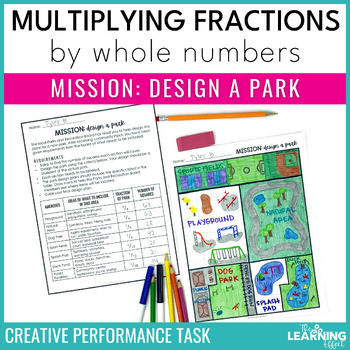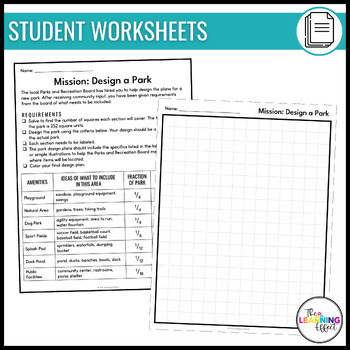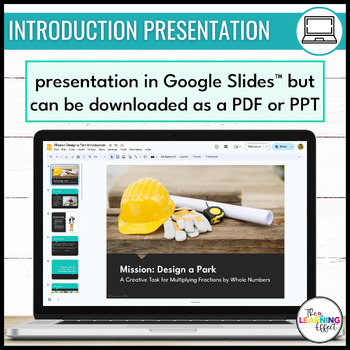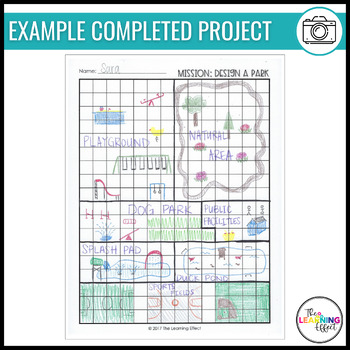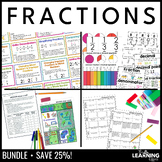Multiplying Fractions by a Whole Number Activity Math Project Based Learning PBL
- PDF
What educators are saying
Also included in
- If you teach fractions in upper elementary, this bundle of resources is just for you! This bundle is jam packed with posters, interactive notebook pages, games, activities, and more!Save 25% by purchasing five fraction resources in this money-saving bundle! Perfect for 4th, 5th, and 6th grade.THIS BPrice $15.25Original Price $20.50Save $5.25
Description
Mission: Design a Park is a performance task that allows students to creatively practice multiplying a fraction by a whole number. Students follow the given criteria to determine the amount of space each park amenity requires. This activity is intended to be used after teaching multiplying fractions.
⭐ BUNDLE & SAVE ⭐
Save 25% by purchasing this resource in a bundle with my best-selling fraction resources
THIS RESOURCE INCLUDES
- Introduction presentation (Google Slides™ file, but can be downloaded as a PDF or PPT)
- Teacher instructions
- Performance task (2 worksheets)
- Answer key
- Example of the completed task
INCLUDED FILE FORMATS
- PDF: This resource requires Adobe Reader (free software). The contents may not show correctly if using other PDF software.
- Google Slides™: To access the Google Slides™ version, you need to have a (free) Google account. The included PDF contains a link to access the digital resource.
PLEASE NOTE
⚠️ The files are NOT editable in any way, and you will not be able to manipulate the content inside.
⚠️ This resource is NOT listed with the TpT Google Drive tool. You will need to manually make a copy of the Google file with the link in the PDF you download after you purchase.
Fractions Resources
- Fraction Posters and Interactive Notebook Pages
- Fractions and Decimals | Games, Posters, Word Wall
- Multiplying Fractions Game | Tumble Blocks Math Activity
CLICK HERE to follow The Learning Effect and be the first to know when NEW resources are added to my store!
New resources are always discounted for the first 48 hours.
CONNECT WITH ME
The Learning Effect Blog • Instagram • Facebook • Email Sign Up
Please ask ALL questions before purchasing.
© The Learning Effect, LLC | Tiffany Schmidt
All rights reserved by author.
Permission to copy for single classroom use only.
Please purchase additional licenses at a discounted rate for additional users.
Intended for classroom and personal use only.

